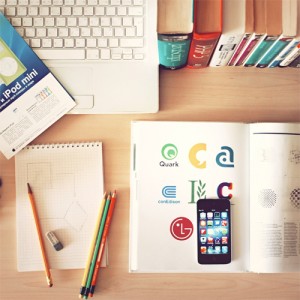6 tips for designing a standout logo

Your logo is an essential part of your company’s visual framework. Whether you’re a burgeoning business looking to create an identity for the first time, or an established company looking to refresh, there is a lot to consider before you get started. Read on to find out where you should start.
-
Build a brand, then your logo
When I say to you Marks and Spencer, what do you see? You may briefly envisage the logo. But perhaps also; the inside of the store, the food aisles, the packaging of the last item you bought. Maybe even the staff’s uniform, their demeanour and the checkout process. Your logo is not your brand, it’s simply a core part of your visual identity. Your entire offering should be fully fleshed out and considered. The process will be much smoother for your designer and the final result will better express your service offering.
-
Embrace change
The first step is getting your logo designed is making that first step. For existing businesses that have owned their current logo for a number of years, it can be a difficult decision to let it fly the nest. It’s important to understand and embrace change. Trends are always evolving and you should think of your designer as a trend forecaster. It’s their responsibility to understand the context of the current market and what lines up with current standards and expectations. Take Google’s recently revamped logo. We may all have felt a familiarity with the old logo and because of that, a certain kind of affection, but did it necessarily stand up to scratch in the current market? Not particularly, so it was both a bold and necessary decision to move their visual identity onwards to better express what Google is today.
-
Don’t be distracted by bells and whistles
You know what they say, empty vessels make the most noise, and that certainly rings true for an over-done logo. Getting your logo designed is an exciting process. It can be tempting to try and visually cram in all aspects of your business. There’s so much to say and you offer such a great service, your logo needs to shine and stand out! Well, of course it does, but bear in mind simplicity proclaims confidence. Think of strong brands such as Apple; the logo by itself is rather simplistic, but it’s that striking simplicity that makes it so instantly recognisable.
-
Your target market is the focus
Your target market should be foremost on your mind when you’re having your logo designed. It’s easy to let personal taste dictate the direction of your logo, but don’t fall into this trap. Your logo doesn’t need to convince you, it needs to convince your customers. Whether you offer a product or a service, it’s key to understand who will be engaging with your brand, in what ways they will be doing so and finally how your logo plays a part in that. Make sure to share with your designer any insight you have about your customers or target market.
-
Involve your staff
Your staff are your brand ambassadors. They should understand your business inside out and be championing what it is you do. As such, it’s important they understand the reasoning behind the logo and fully embrace it moving forward. It may surprise you how passionate your staff can be about your visual identity, so they shouldn’t feel left behind in any sweeping changes. Involve them in a brand day before the change so everyone, including your designer, is on the same page about what it is you do. After the fact make sure to have a meeting which explains the thought behind the logo and goes over the brand guidelines.
-
Consistency is key
Little slip-ups in your brand framework can be subconsciously noticed and indicate a lackadaisical approach to quality control. There’s no point having a fantastic new logo if, for example, your website is out-dated, or your copy doesn’t stand up to scratch. You need to show you scrub up well and this means keeping a keen eye over the consistency and quality of everything you produce. Alongside having your logo designed you should have some accompanying brand guidelines. At the least, these guidelines should set out instructions on your visual identity, typography and corporate colours alongside logo use and misuse.
If you’d like help and advice on designing your logo and brand identity or any other aspect of your marketing communications don’t hesitate to contact the Pelican Communications team.
Pelican Communications are specialists in the environment, food and drink, outdoor and leisure and packaging sectors and offer a range of services such as media relations, brand management, event management and people development.
